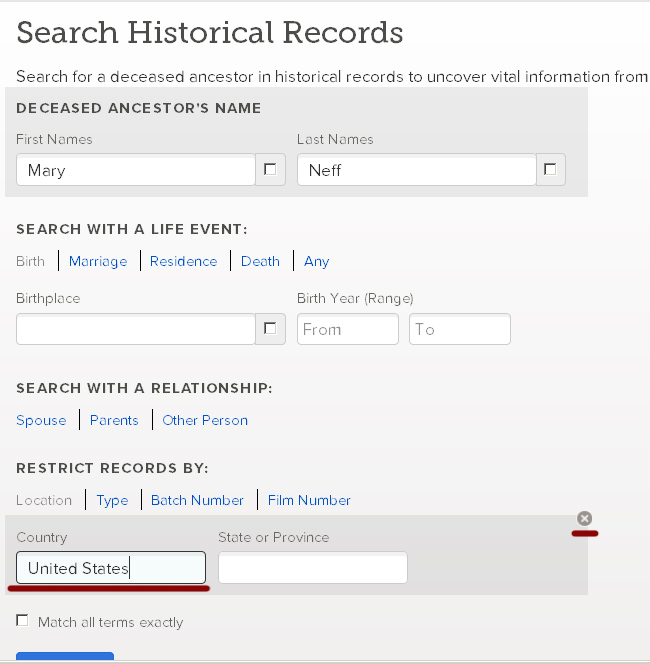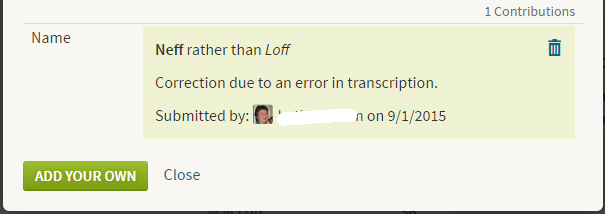Search filters on Ancestry and Family Search could inspire a book. They can help you find a record, but can also hide records from you. I'll present thoughts in small bites. Today I just want to write about the Country filter.
Mary Maddox Neff was the wife of a farmer and laborer. It was very unlikely that she ever left the United States, so I can safely restrict my searches to this country and so avoid looking at record collections that just clutter my screen.
Think about the person you are searching. Were they an immigrant? Were they affluent enough to travel? Did their occupation require international travel? What countries might they have traveled to or through?
For example, my Swedish ancestors traveled through England on the way to New York. I need to search records from Sweden, England and the United States. Did they stop off in Barbados on the voyage? I'll want to search each country separately.
Setting the country filter is easy on Ancestry. Either on the main search screen or on the edit search screen, just use the little drop down arrow for Collection Focus. Pick the country or region of interest before clicking on Search.
On the first search page at Family Search, start typing in the country and it will try to match the name. Click on the country name that's right before you click on Search. The X at the top right of the location does not clear it out. You'll have to use your space bar if you want to clear it.
If you are already looking at search results on Family Search, it's a little harder to find this filter. You'll have to roll down to find the word Location on the left side.
Click on the word Location and the country box will appear. Start typing in the country and it will try to match the name. Click on the country name that's right before you click on Update. The X at the top right of the location does not clear it out. You'll have to use your space bar if you want to clear it.
Recapping, use the country filter to remove large numbers of irrelevant collections from your search results.






























